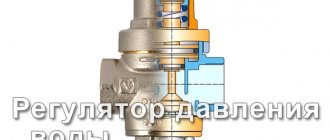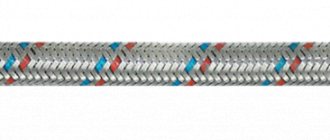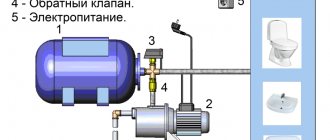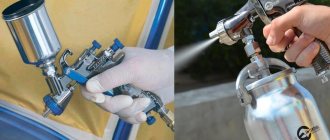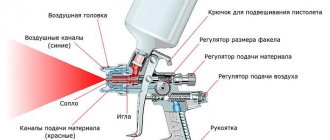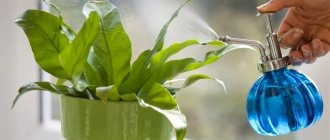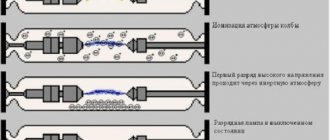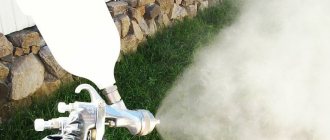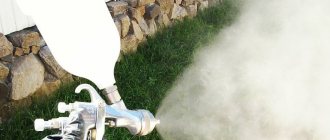The water pressure control valve (reducer) plays an important role in the water supply and heating system of an apartment or private house. It helps protect your pipes and plumbing from excessive pressure and reduces the likelihood of emergency flooding. Take the choice of a water pressure control valve seriously and follow all the requirements from the manufacturers during installation. Let's consider information about popular models of control valves, talk about their installation, adjustment and repair.
Why is it needed and how does the RDV work?
Water is supplied to both the centralized and autonomous systems by pumping equipment. Fundamentally, these schemes differ only in the number of branches, the diameter of the pipes and the number of shut-off valves. And pressure surges due to various technical reasons are possible in any of them. The water pressure regulator in the water supply system stabilizes the pressure and dampens the hydraulic shocks that occur in it.
In autonomous systems it is installed at the entrance to the house, in front of the meter, in centralized systems - in front of the apartment wiring. Such a mechanism will not hurt in private houses connected to a centralized water supply, despite the fact that there is a common water supply.
Regulator functions
The mechanism, which is also called a pressure reducer, acts as a stabilizer in the household water supply network. Without it, equipment designed for a certain pressure and responding to its changes fails faster. This applies not only to household appliances that consume water, for which water hammer becomes a serious test. But also electric boilers, gas water heaters, boilers, water meters.
When the gearbox cannot be built into the beginning of the intra-house network, it is installed directly in front of the washing machine or other expensive equipment Source www.rmnt.ru
The pipelines themselves, especially the junctions and joints, also suffer from water hammer. With frequent pressure surges, they lose their tightness and begin to leak.
There is another reason why it is advisable to use a water reducer: it is convenient to use water dispensing devices. It’s not pleasant when a stream from a tap or shower head with adjusted temperature and pressure suddenly begins to randomly change these parameters.
Operating principle
Despite its modest size and simple design, the RDV copes with pressure regulation independently, without connecting additional equipment. And it does this automatically.
The principle of its operation is similar to how the flow of water is regulated by a valve tap, when unscrewing it the rod and piston rise and open a lumen of a certain cross-section. But in this case, as the pressure in the system increases, the piston remains motionless, and the force of the water flow increases. Whereas the water pressure valve in the reducer in such a situation changes its position and reduces the clearance.
At the outlet of the device, the pressure drops to the values set by the setting Source i.ytimg.com
We will trace the entire path of water through a system equipped with an RDV.
Water is supplied to the house from a well, a well or a centralized system using pumps that set a certain pressure.
Due to a pump malfunction, the tap on a branch being closed, or for some other reason, the pressure changes sharply, which threatens the equipment connected to the network with failure.
Passing through the reducer, the flow of water puts pressure on its operating element, which contracts and automatically reduces the clearance of the valve.
Changing the flow area does not allow water to move with the same pressure; it decreases and the water leaving the reducer flows to the points of consumption with standard pressure indicators.
In houses with water supply from a well or well, a hydraulic accumulator is often installed, equipped with a similar mechanism - a pressure switch. This device operates from an electrical network and is designed to turn on the pump when the pressure in the hydraulic tank drops, and turn it off when the specified parameters are reached. In this case, a water pressure reducer in the water supply system is not necessary, since the pressure will not exceed the maximum values set for the accumulator.
Autonomous water supply system with hydraulic accumulator Source cdn.sovet-ingenera.com
But the pressure in the pipes will change within the limits specified by the relay. If the maximum pressure set for the hydraulic tank is more than 3 atmospheres, and for normal operation of household appliances it must be lower, then a regulator should be installed.
A short overview of the best manufacturers
The modern domestic market is able to offer a huge range of water control devices from various manufacturers. Most of them have proven themselves to be high-quality and competent sellers over the entire period of sales. First of all, these include:
- Valtek is a company originally from Italy with an official Russian representative office. Its equipment release processes are fully automated, reducing the risk of human error. Technical control of new models is carried out in our own testing laboratory;
- Honeywell is a German concern that has been successfully developing the Russian market for more than 45 years. Gained well-deserved popularity thanks to the use of innovative developments in the field of engineering communications, energy resources and industrial problems;
- ISMA is another Italian representative whose production resources are entirely located in their homeland. Specializes in the production of equipment for water supply, ventilation and heating, as well as air conditioning. Particular attention in the production process is paid to the quality of raw materials and manufacturing materials;
- "Aquasphere" is a representative of a domestic manufacturer, specializing in the sale/manufacturing of safety/shut-off valves for water supply systems. Also able to offer high-quality fittings, pipes and filters. Has an extensive dealer network throughout Russia;
- Watts is a North American company with many branches around the world. Production is focused on the production of equipment for industrial purposes in the field of purification, control and consumption of water resources. Despite its industrial orientation, the product range also includes equipment for household needs.
Types of regulators
Pressure regulators are classified according to several criteria . By purpose they are divided into:
- household with a productivity of about 3 cubic meters/hour;
- commercial – up to 15 cubic meters/hour;
- industrial – more than 15 cubic meters/hour.
A household water pressure reducer in the system is installed on internal distribution pipes with a maximum diameter of 2 inches and is mounted using threaded couplings or adapters. And more powerful mechanisms are built into main water pipelines of larger diameter, and their installation is carried out on flanges.
Industrial regulator with flanges and pressure gauges Source zavodaso.ru
The materials for the manufacture of devices are non-corrosion metals - cast iron, brass and brass alloys, chrome-plated or nickel-plated steel.
Household RDVs have two threaded side pipes for connection to pipes, as well as an adjusting screw and an outlet for connecting a pressure gauge.
On a note! Some models can be equipped with other devices: a ball valve, a coarse filter (dirt filter), etc., which eliminates the need for additional installation.
According to their internal design, gearboxes are divided into membrane, piston and labyrinth.
Diaphragm reducers
This type of regulator is considered the most wear-resistant, as it easily tolerates the presence of mechanical impurities in water. In addition, it is more powerful, and the water pressure regulator can be adjusted more accurately and over a wider range. But these characteristics are reflected in the cost of the device - it is the most expensive of the household line.
Diagram of the membrane regulator Source i.ibb.co
Water entering the chamber under high pressure puts pressure on the rod with the spring, it presses the membrane and reduces the gap through which the liquid flows out, thereby reducing the pressure.
See also: Catalog of companies that specialize in the installation of engineering systems: heating, water supply and sewerage.
Piston gearboxes
The principle of operation is the same, only the flow area changes due to the movement of the piston, which is pressed by the spring. Such mechanisms are cheaper, but due to the presence of moving elements they are more likely to fail and are more sensitive to the quality of the liquid. Therefore, it is necessary to install filters in front of them.
Membrane
In such samples, a special membrane coupled with a spring reacts to pressure changes. The spring is capable of expanding/compressing, thereby limiting the flow.
The advantages of these gearboxes include:
- The presence of a sealed chamber protects the structure from contamination, therefore, this device will not require the installation of filters and complex maintenance;
- Has an extended range for regulation (from 0.5 to 7 atmospheres).
The only downside is the following property:
- The complexity of the design of such a device significantly increases its price (almost 2 times compared to a piston device).
Video description
How a piston water pressure regulator in a system works and how it differs from a membrane regulator is described in the video:
For reference! When water is supplied to the system at normal pressure, it passes through the reducers without encountering resistance in the form of a reduced clearance, so the pressure decreases slightly, within 0.1-0.2 bar.
Labyrinth gearboxes
Unlike diaphragm and piston designs, labyrinth regulators have no moving parts. Their internal space is divided into many small channels, through which the water loses pressure, overcoming hydraulic resistance.
Such devices are not equipped with pressure gauges and are installed locally in front of water-consuming equipment.
Note! Particularly high demands are placed on water purity when using labyrinth gearboxes.
When choosing an RDV, you need to study its operating parameters in order to determine the possibility of its use in a particular system. First of all, this is the connection diameter, permissible water temperature, maximum inlet pressure, and the range within which it can be adjusted.
The connection diameter is indicated on the device body Source kanaliza.ru
Piston
As mentioned above, piston models are the most common, and the main work in them is performed by an integrated spring-loaded piston. The control spring is adjusted using a special tap, and the piston, in turn, will shut off the line to some extent if the pressure rises to a critical level.
The advantages of these models include:
- Availability and ubiquity;
- A simple design coupled with small dimensions (with proper operation) shows high efficiency results.
The disadvantages include:
- They have small setting ranges (from 1 to 4.5 atmospheres), but they are enough for home networks;
- They require mandatory filtration of the water that passes through them. Those. There should not be a large accumulation of dirt and small mechanical fragments in the flow, which can lead to a wedge of the piston. If the water supply in your home does not have a reliable degree of filtration, then you should purchase a model with a built-in filter.
Installation and configuration
Installing a household regulator is as easy as a water meter. Especially if you do this right away when installing the internal wiring. If it needs to be integrated into an already operating system, then to do this you first need to turn off the water and drain its remains by opening all the taps in the house. Then cut out part of the pipe, install connecting fittings and connect the gearbox to them, sealing all connections. In this case, it is necessary to take into account the direction of flow indicated by the arrow on the body, and place the pressure gauge vertically.
Which is better?
To get a general impression of the two types of gearboxes, the table below shows their main comparative characteristics:
| Characteristic | Diaphragm reducer | Piston |
| Bandwidth | 2.5 cubic meters/hour | 1.6 cubic meters/hour |
| Adjustment accuracy | ±5% | ±10% |
| Sensitivity to water quality | No | Eat |
| Installation Position Requirements | In any position (vertically, horizontally, at an angle) | In a horizontal position to avoid abrasion of the piston O-ring |
| Noise level | Short | High (due to the large number of metal components) |
| Case dimensions | Larger | More compact |
| Life time | Virtually unlimited | ±1 year before repair or replacement |
| Price | 35-45$ | 15-25$ |
Briefly about the main thing
Not a single water supply system operates without failures and pressure surges in the pipes, the consequences of which can be depressurization of joints, equipment breakdown, and failure of mixers. A pressure regulator will help you avoid them, automatically reducing the pressure to standard parameters.
Depending on the operating mechanism, it can be piston, membrane or labyrinth, and can be installed either at the very beginning of the internal main wiring of the house, or directly in front of equipment that is sensitive to changes in water pressure.
Simple installation, extended service life of the equipment and the ability to configure the device to the desired values make it an indispensable device for stable operation of the system.
Ratings 0
Principle of operation
The internal chamber of the membrane reducer has a rather complex structure.
The incoming water flow passes to the outlet through the valve. It also affects the elastic diaphragm. And the higher the water pressure, the stronger the pressure on the membrane, and the stronger the bypass valve closes.
The reaction of the membrane to the incoming fluid flow depends on the spring pressure . That is, the stronger the spring presses on the membrane, the more difficult it is for the incoming flow to lift it and increase the passage.
The design provides for movement of only the membrane and valve. The spring is located in a separate dry chamber and is isolated from the influence of water by the same membrane, which eliminates premature corrosion of the metal.
Where to buy, what is the price?
There is an easy way to purchase an original product without the risk of falling into the hands of scammers and receiving a copy. As a rule, manufacturers of plumbing products indicate on their official websites authorized stores where you can purchase their products with documentation, warranty and technical support.
You can also purchase it on Yandex market or any other large Internet site.
Approximate prices for filters for 1/2-inch threads from manufacturers:
- Valtec 085.N – 2914 rub.;
- Honeywell D06F-3/4A – RUB 3,560;
- HERZ 2682 – 3438 rub.
Recommendations for use
While using the product, monitor pressure differences in the supply system pipeline. If the controller does not perform its function and does not regulate the pressure, this indicates that the membrane is broken.
Poor-quality sealing of joints is indicated by drops that appear in the area of connection between the device elements and pipes.
If you notice these problems, remove the gearbox and disassemble the structure. Don't forget to close the riser first.
Purchase parts that need to be replaced from specialized retail outlets and ask for quality certificates.
Best water pressure reducers for 2022
The domestic market is represented by a large number of different models of pressure limiters, both Russian and foreign. It is preferable to select products whose body is made of materials of increased strength. Such materials include brass, bronze or stainless steel. In addition, the body of such devices should not have various irregularities or burrs or metal deposits.
Where can I buy? You can purchase such a device of domestic or imported origin in specialized online stores by placing an online order.
From the budget category, when you need to buy an inexpensive regulator, it is recommended to pay attention first of all to domestically produced products. This is due to the fact that they have the most optimal ratio in terms of price and quality. The quality of workmanship of more expensive foreign-made limiters is, as a rule, slightly higher. However, in most cases, they are rarely equipped with pressure gauges, which makes such units difficult to adjust.
Criterias of choice
The quality of the device is important. The duration of uninterrupted service depends on it. Therefore, preference should be given to trusted manufacturers of these devices.
When purchasing a device for your apartment, you should not take the cheapest one.
It is necessary to select a replacement gearbox taking into account the diameter of the existing inlet pipes. Typically this is 15 mm (1/2″) or 20 mm (3/4″).
It wouldn’t hurt to look at the number of work cycles. If less than 250,000 is indicated, you should not take it. The minimum throughput of any limiter is 1.2 m3 per hour. This is quite enough for a standard three-room apartment.
But for apartments with two bathrooms and toilets, it is worth taking at least 2.0 m3 per hour. And this is RD-20 (3/4″). The same regulator should be taken for a private house, when water is used to water the adjacent area.
If your budget allows you to pay 2.5 thousand rubles for a reducer, then the choice is the membrane type of limiter. It will last longer and will not undermine.
Equipment
Reducers can be equipped with pressure gauges for visual monitoring of pressure and the ability to regulate pressure according to instrument readings.
Regulators can be produced in the same housing with a coarse filter. For use in pumping stations, automatic pressure regulators are used.
More modern gearboxes are equipped with an electronic unit that allows you to control the pump using an installed program. There are regulators with an electric rod drive that operate based on a signal from an electric pressure sensor. Such devices require a constant power supply.
